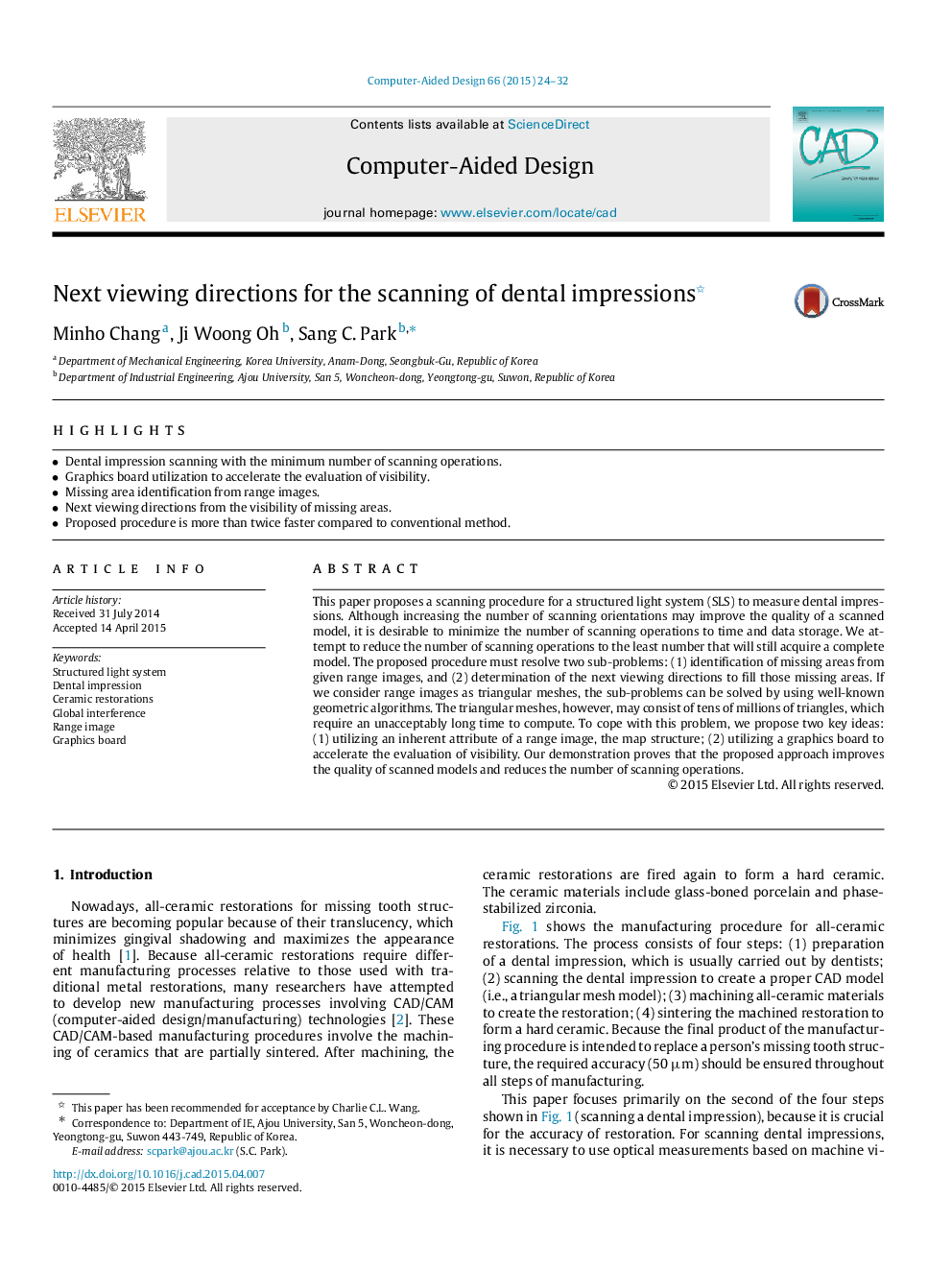| Article ID | Journal | Published Year | Pages | File Type |
|---|---|---|---|---|
| 439405 | Computer-Aided Design | 2015 | 9 Pages |
•Dental impression scanning with the minimum number of scanning operations.•Graphics board utilization to accelerate the evaluation of visibility.•Missing area identification from range images.•Next viewing directions from the visibility of missing areas.•Proposed procedure is more than twice faster compared to conventional method.
This paper proposes a scanning procedure for a structured light system (SLS) to measure dental impressions. Although increasing the number of scanning orientations may improve the quality of a scanned model, it is desirable to minimize the number of scanning operations to time and data storage. We attempt to reduce the number of scanning operations to the least number that will still acquire a complete model. The proposed procedure must resolve two sub-problems: (1) identification of missing areas from given range images, and (2) determination of the next viewing directions to fill those missing areas. If we consider range images as triangular meshes, the sub-problems can be solved by using well-known geometric algorithms. The triangular meshes, however, may consist of tens of millions of triangles, which require an unacceptably long time to compute. To cope with this problem, we propose two key ideas: (1) utilizing an inherent attribute of a range image, the map structure; (2) utilizing a graphics board to accelerate the evaluation of visibility. Our demonstration proves that the proposed approach improves the quality of scanned models and reduces the number of scanning operations.
